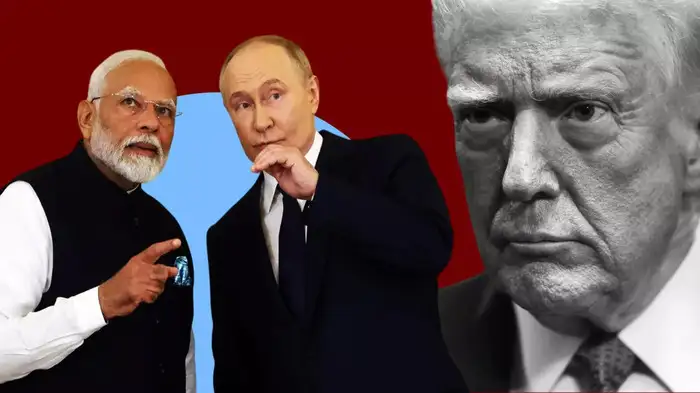New Delhi: As diplomatic tensions grow following the U.S. government’s decision to impose a 50% tariff on Indian goods—including an additional 25% duty on crude oil imports from Russia—India has chosen to continue purchasing Russian oil and bolster its rupee-ruble trade mechanism.
Despite mounting international pressure, India has implemented several measures to facilitate trade with Russia in local currencies, bypassing the need for the U.S. dollar in key transactions. The Reserve Bank of India (RBI) and the Indian government are now accelerating efforts to enhance this system.
Why Is the Rupee-Ruble Trade in Focus Again?
The resurgence in discussions around rupee-ruble trade follows the U.S. announcement of higher tariffs. On August 5, the RBI issued a circular easing restrictions on Special Rupee Vostro Accounts (SRVAs), allowing authorized dealer category-1 banks to open SRVAs for foreign banks without prior approval from the central bank.
Additionally, RBI has now permitted Russian entities to invest surplus rupee balances in Indian government securities and treasury bills, further integrating the rupee into global trade frameworks.
What is a Vostro Account?
A Vostro account allows a domestic bank to hold money in its local currency on behalf of a foreign bank. In the context of Indo-Russian trade, it enables a Russian bank to hold Indian rupees in an account operated by an Indian bank. This facilitates direct trade settlements in rupees, eliminating the need for a third currency like the U.S. dollar.
In contrast, traditional cross-border trade often relies on the dollar as an intermediary, incurring additional conversion costs and delays.
How Will the RBI’s New Policy Help?
The recent RBI directive simplifies and accelerates the process of setting up SRVAs. Banks can now open these accounts autonomously, expediting international invoicing, payments, and settlements in rupees.
This change is expected to increase the volume and speed of rupee-based trade, especially with Russia, and enhance India’s financial independence amid global geopolitical shifts.
How SRVA Facilitates India-Russia Oil Trade
Russia has emerged as India’s largest crude oil supplier in recent years. Under the SRVA framework, Russian oil exporters can receive payments in rupees through Indian banks. This allows Indian importers to settle transactions without converting currencies to dollars—cutting costs, minimizing exchange rate risks, and reducing payment delays.
Key Challenges in Rupee-Ruble Trade
Despite its benefits, the rupee-ruble system faces several hurdles:
-
Trade Imbalance: India imports far more from Russia than it exports, leading to an accumulation of rupees in Russian accounts that are hard to utilize.
-
Currency Preferences: Some Russian companies unaffected by Western sanctions still prefer payments in U.S. dollars.
-
Ruble Volatility: Frequent fluctuations in the ruble’s value make direct rupee-ruble exchanges complex and risky.
-
SWIFT Restrictions: Sanctions have excluded many Russian banks from SWIFT, the global banking communication system, complicating transaction verifications and settlements.
-
Banking Hesitancy: Indian banks often exercise caution when processing Russia-linked payments due to fear of secondary sanctions.
Steps Taken to Overcome These Challenges
To address these issues, Indian authorities are exploring multiple solutions:
-
Rupee-Ruble Exchange Rate Mechanism: A fixed or market-linked conversion system could reduce reliance on dollar intermediaries.
-
Alternative Payment Networks: India is considering replacements for SWIFT to securely process cross-border transactions with Russia.
-
Expanded Investment Options: The RBI now allows Russian firms to invest their surplus rupees in government bonds, equities, infrastructure projects, and more—diversifying usage beyond trade.
-
Third-Country Settlements: Discussions are underway to create tri-party trade agreements, particularly involving countries like the UAE, enabling triangular settlement systems.
-
Export Redirection: Russian entities may use accumulated rupees to purchase goods from third-party countries via Indian exporters, effectively recycling the rupee within global trade.
Outlook
India’s push to deepen rupee-based trade with Russia comes at a crucial juncture in global economics. While challenges persist, the evolving rupee-ruble settlement system demonstrates New Delhi’s commitment to building a more autonomous and resilient trade framework, capable of withstanding external geopolitical shocks.


